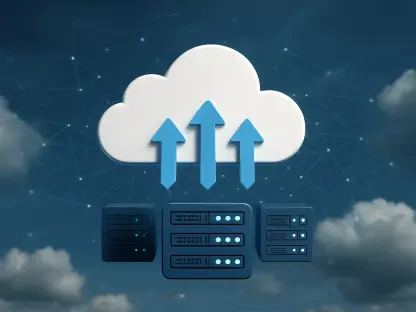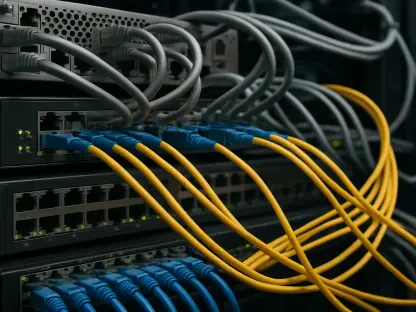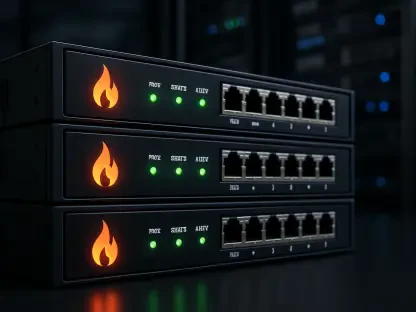In an age where digital interactions dominate everyday life, protecting one’s online presence has never been more critical. Cyber threats are escalating, and traditional methods like passwords and PINs are proving inadequate. CardLab’s biometric authentication system offers a groundbreaking way to enhance online security. By replacing conventional passwords with fingerprint verification, CardLab significantly reduces the risk of data breaches and account takeovers, providing a secure and efficient means of access control.
1. Recognizing the Vulnerabilities
The traditional reliance on passwords, two-factor authentication (2FA), and centralized credential storage presents significant risks. One of the primary issues is the widespread use of weak or reused passwords. Many individuals use simple, repetitive passwords, which are prime targets for brute-force or credential-stuffing attacks. Additionally, phishing and social engineering tactics allow attackers to trick users into revealing their credentials, bypassing even the most sophisticated security barriers.
Centralized credential repositories, including password managers, present another vulnerability. Despite their enhanced security features, these repositories can still be compromised. Once accessed, attackers can gain entry to encrypted vaults or backup files, exposing users to substantial risk. SIM swap attacks further undermine authentication methods. By intercepting SMS-based 2FA or using malware to circumvent app-based authentication, attackers can easily gain unauthorized access.
The solution lies in a combination of offline biometric verification and user-controlled devices. This approach ensures that biometric data is never stored centrally or transmitted over a network, greatly minimizing the risk of data breaches. Moreover, tokenization of the user’s identity means that even in a man-in-the-middle attack, no personal data can be extracted. CardLab’s system eliminates static passwords, making them immune to theft or duplication.
2. The Solution: CardLab’s Biometric Authentication System
CardLab’s biometric ‘Authentication as a Service’ solution offers a high-security mechanism for user verification, suitable for both physical and logical access. The biometric smart card operates offline, storing fingerprint data directly on the card. This ensures that biometric information is never transmitted over a network, significantly enhancing security and privacy. When the user is verified, the card generates a unique token used for online access. This token is verified in the backend before granting access to applications, ensuring a decentralized and secure authentication process.
Fingerprint sensors on the CardLab smart card provide a robust solution to data breaches through its biometric technology. By utilizing unique fingerprint patterns, the sensor ensures that only authorized individuals can access sensitive information. Unlike traditional passwords, biometric data is unique to every individual and cannot be replicated or shared. This non-transferability adds an additional layer of security, making it challenging for malicious actors to breach protected systems. The sensor’s advanced encryption technology further safeguards user data, providing a fast, reliable, and secure means of access.
3. Utilization Process
The process of using CardLab’s biometric card to prevent account hacks and data breaches involves several critical steps. First, user enrollment and setup are essential. During this phase, the user registers their fingerprint directly onto the card via the fingerprint sensor. The biometric data is securely stored within the card’s memory, making it impervious to extraction or cloning. Importantly, this enrollment process does not require an internet connection, thereby eliminating exposure to remote hacking attempts during an otherwise vulnerable phase.
Next, secure user verification on the card occurs. When accessing an online service, the user presents the card to a compatible NFC or Bluetooth reader. The system then prompts the user to place their finger on the card’s fingerprint sensor. If the fingerprint matches the stored template, the card confirms the user’s identity internally, occurring entirely offline to ensure the biometric data never leaves the card.
The final step involves backend authentication. Once the card verifies the user, it generates a unique token or cryptographic signature for each authentication request. This signature is sent to the service provider for authentication, completing the secure passwordless login process. This stage requires a connection to communicate with the authentication server, achievable via contact chip, NFC, Bluetooth, or manual entry using the card’s display.
4. Advantages over Traditional Methods
The CardLab verification and authentication solution offer significant advantages over traditional password-based methods. Users no longer need to remember endless passwords, reducing the potential for human error. Even if an attacker gains physical possession of a user’s device, access to accounts remains blocked without the biometric card and the correct fingerprint. Unlike password managers, which store and autofill credentials, the CardLab card itself acts as the sole verification mechanism, heightening security.
Moreover, CardLab’s biometric smart card is not only used for digital access but also for physical access control. Whether entering a secure facility or accessing a restricted area, the same verification mechanism applies, demanding both the physical card and biometric verification for entry. This dual functionality allows organizations to integrate the card into existing access control systems without requiring significant infrastructure changes.
5. Protection from Phishing and Credential Theft
Phishing and credential theft are major threats in the digital world. Traditional authentication methods often require user input, which can be intercepted or tricked from users on fake login pages. However, CardLab’s biometric card operates offline during the user verification process, ensuring credentials are never exposed to phishing attempts. Each login generates a new token, eliminating the risk of reusable credentials being exploited. Additionally, the cryptographic link between the card and the service ensures that attackers cannot intercept or replay login data, rendering such attempts futile.
The decentralization inherent in CardLab’s system also enhances data privacy. With no biometric data stored on external servers or transmitted during verification, exposure to mass data breaches is significantly reduced. Furthermore, the card operates independently of cloud-based authentication services, preventing unauthorized access even if backend systems are compromised. Unlike SIM-based authentication, the CardLab biometric card cannot be hijacked through SIM swap fraud, offering robust protection against this increasingly common attack vector.
6. Decentralized Security and Privacy
One of the key strengths of CardLab’s biometric authentication system is its decentralized nature, which ensures data privacy and security. Biometric data is stored solely on the card, not externally, and is never transmitted during the verification process. This drastically cuts down the risk of data breaches that arise from compromised centralized databases. The operation of this system is independent of cloud-based authentication services, providing an extra layer of security, even if the backend systems are targeted.
This system’s immunity to SIM swap fraud, a prevalent technique for intercepting SMS-based 2FA codes, is another significant benefit. By ensuring that verification occurs offline and that all data stays confined to the card, the biometric authentication system proves impervious to various cutting-edge cyber threats. This ensures the authenticity and privacy of user data.
7. Real-World Application: Preventing Enterprise Data Breaches
CardLab’s biometric authentication system has practical applications in numerous fields. Consider a multinational corporation, healthcare platform, government institution, law firm, or banking entity handling sensitive data. These organizations have encountered increased phishing attempts and credential theft, often resulting in significant security breaches. Incorporating CardLab’s solution could prevent the reuse of stolen credentials and mitigate such attacks.
Before implementing CardLab’s biometric solution, employees might reuse passwords across multiple accounts, making them vulnerable to attacks. Phishing attacks could trick employees into revealing credentials, while SIM swap attacks might bypass SMS-based 2FA, allowing unauthorized access. However, with CardLab’s biometric authentication, verification would rely solely on the fingerprint-stored biometric card, rendering those phishing and SIM swap tactics ineffective. This solution would notably reduce security breaches and enhance regulatory compliance.
8. Conclusion: The Future of Secure Verification
In today’s world, where digital interactions are a huge part of our daily routines, safeguarding our online presence is more vital than ever. Cyber threats are on the rise, and old-fashioned security measures like passwords and PINs are no longer up to the task. This is where CardLab’s biometric authentication system comes in, offering a cutting-edge solution to boost online security.
Traditional passwords are easily compromised, and PINs can be forgotten or stolen, leaving our accounts and personal data vulnerable to breaches and unauthorized access. CardLab’s innovative approach leverages fingerprint verification to significantly enhance the security of access control systems. By using a person’s unique fingerprint as a form of authentication, CardLab greatly minimizes the possibility of data breaches and account takeovers.
With CardLab’s biometric system, there’s no need to remember long, complicated passwords or worry about them being hacked. Fingerprint verification provides a secure and efficient means of access, ensuring that only authorized individuals can access sensitive information and online accounts. This revolutionary method offers peace of mind in an increasingly digital world, where our online footprints are more susceptible to cyber risks. CardLab’s technology not only simplifies the process of logging in but also ensures a high level of protection against the ever-evolving landscape of cyber threats.









